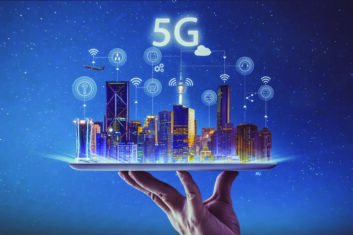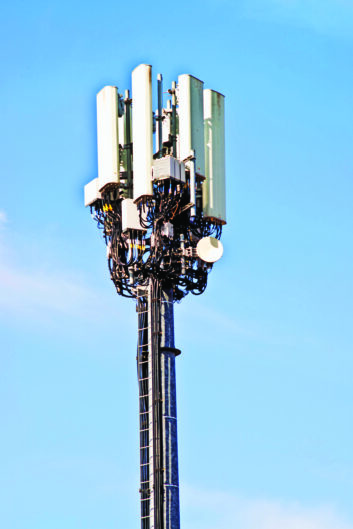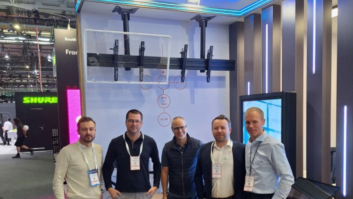 Gone are the days when we expected a seamless collaboration environment interconnected by a powerful network. Recently, it has gone from an impossible to do list to a reality with the introduction of 5G technology in a number of business applications. When it comes to the world of manufacturing, now is the right time to make investments for business expansion opportunities.
Gone are the days when we expected a seamless collaboration environment interconnected by a powerful network. Recently, it has gone from an impossible to do list to a reality with the introduction of 5G technology in a number of business applications. When it comes to the world of manufacturing, now is the right time to make investments for business expansion opportunities.
The true potential of 5G can only be realised when it is integrated with Industry 4.0 technologies like the Internet of Things (IoT), artificial intelligence (AI), edge computing, and AR/VR. 5G will generate real-time data that can be translated into real-world applications in production. Based on data analysis, these technological capabilities not only improve productivity and efficiency, but also enable more informed decisions. From manufacturing to supply chain strategies and logistics, sensors will harness the potential of 5G to create a connected, intelligent ecosystem that will transform the way companies operate and thrive in today’s business environment.
5G technology offers several advantages that make it particularly well-suited for use with automation technologies.
5G networks provide extremely low latency, reducing the delay between sending and receiving data. This is crucial for real-time communication and control in automation applications. Low latency ensures quick response times, making it suitable for time-sensitive tasks in industrial automation, robotics, and other automated systems.
It offers significantly higher data transfer rates compared to previous generations of mobile networks. This increased bandwidth allows for the seamless transfer of large amounts of data, which is essential for high-definition spatial data & video streaming, complex sensor data, and other data-intensive applications commonly found in automation.
IOT REVOLUTION
There can also be support for a significant number of simultaneous device connections per square kilometre. This is essential for the Internet of Things (IoT) and the increasing number of interconnected devices in automated systems. In industrial settings, for example, there may be a multitude of sensors, actuators, and devices communicating with each other, and 5G’s capacity to handle a large number of connections is crucial.
 5G networks are designed to be highly reliable. This is important for automation systems, where a consistent and dependable connection is necessary for smooth operations. Reliability is especially critical in applications such as autonomous vehicles, smart factories, and critical infrastructure.
5G networks are designed to be highly reliable. This is important for automation systems, where a consistent and dependable connection is necessary for smooth operations. Reliability is especially critical in applications such as autonomous vehicles, smart factories, and critical infrastructure.
What’s more, 5G introduces the concept of network slicing, allowing network operators to create virtual, dedicated slices of the network optimised for specific use cases. This customisation enables the tailoring of network parameters to meet the specific requirements of automation applications, ensuring optimal performance and resource allocation.
AR/VR SOLUTIONS
5G’s eMBB capability provides high-speed and high-capacity data transfer, supporting applications that require large amounts of bandwidth. This is beneficial for high-quality video streaming, augmented reality (AR), and virtual reality (VR) applications often integrated into automation processes.
5G’s hallmark is its remarkable speed, offering data rates that are exponentially faster than its predecessor, 4G. This high-speed connectivity is a boon for AR and VR applications, which demand a continuous and seamless flow of data. In VR, users can experience ultra-high-definition content without lag or buffering, leading to a more immersive experience. AR applications, on the other hand, benefit from real-time data streaming, enhancing the overlay of digital information and 3D digital twins onto the physical world.
This technology also transforms the landscape of mobile AR applications by enabling richer and more complex experiences. With higher bandwidth and low latency, AR applications on smartphones can deliver more detailed and interactive content for enterprises and manufacturers, especially for supply chains.
Pickers and packers in warehouses can use 5G-powered AR devices to receive visual cues and directions for locating items. This can significantly speed up the picking process and reduce errors. AR can also assist in inventory management by providing real-time information about stock levels.
 VR simulations can be used to train warehouse staff on new processes or layouts. It can also help in planning and optimising warehouse layouts for better efficiency.
VR simulations can be used to train warehouse staff on new processes or layouts. It can also help in planning and optimising warehouse layouts for better efficiency.
Other key areas where 5G significantly impacts AR/VR include supply chain visibility strategies, employee training programs through advanced simulation and modelling, design and prototyping for engineering teams, and communication and collaboration with off-site customers.
Naturally, 5G complements edge computing by bringing computing resources closer to the source of data generation. This is beneficial for automation applications that require quick decision-making and processing of data at the edge of the network, reducing latency and improving overall system efficiency.
The combination of low latency, high bandwidth, massive device connectivity, reliability, network slicing, eMBB, and support for edge computing makes 5G technology well-suited for various automation and virtual-enabled technologies across industries. It enables faster, more responsive, and more efficient automated systems, resulting in improved decision making, more efficient operations, and a more competitive overall organisation in today’s global economy.







